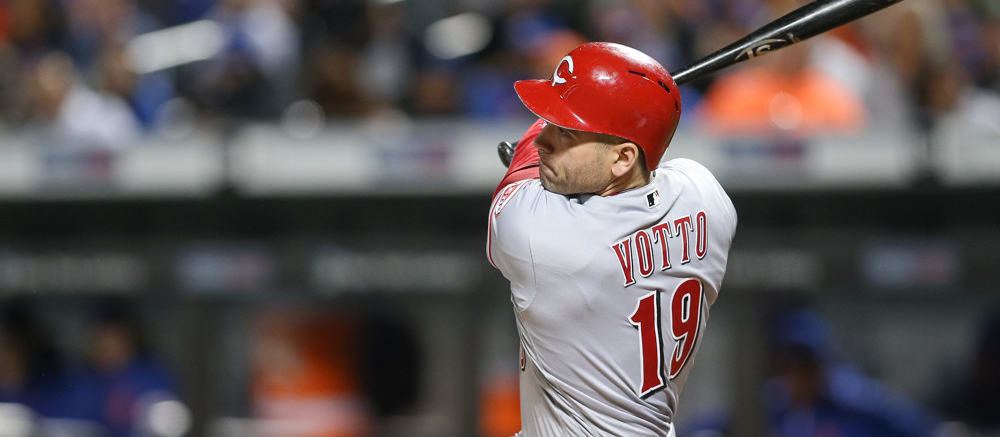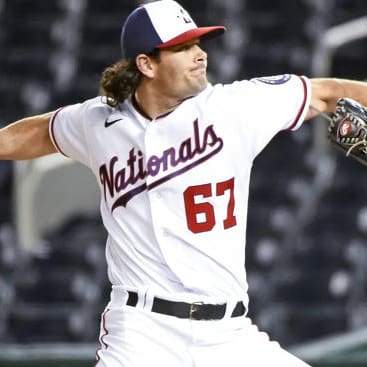This article is part of our The Z Files series.
How many years does a player need to exhibit better second-half numbers to be considered a second-half player? Three? Four? Maybe five?
Let's look at this in terms of probability. If eight people flip a coin three times, the laws of probability dictate one flips three heads while another flips three tails. If sixteen flip it four times, one ends up with four heads while another gets four tails. Upping this to 32 folks flipping five times, again one lands on five heads while someone else gabs five tails.
Do you consider any of the individuals flipping all heads or all tails to be lucky? In a vacuum, if they were the only person participating, sure, they were lucky. However, in context with the population performing the exercise, they weren't lucky. Their result was predicted by simple probability.
Let's say flipping heads represents a better first half, tails a superior second half. At any given time, there are 750 active players. One in sixteen of them, or 94, can be expected to have had three consecutive better second halves (ignoring the fact some of this occurred in
How many years does a player need to exhibit better second-half numbers to be considered a second-half player? Three? Four? Maybe five?
Let's look at this in terms of probability. If eight people flip a coin three times, the laws of probability dictate one flips three heads while another flips three tails. If sixteen flip it four times, one ends up with four heads while another gets four tails. Upping this to 32 folks flipping five times, again one lands on five heads while someone else gabs five tails.
Do you consider any of the individuals flipping all heads or all tails to be lucky? In a vacuum, if they were the only person participating, sure, they were lucky. However, in context with the population performing the exercise, they weren't lucky. Their result was predicted by simple probability.
Let's say flipping heads represents a better first half, tails a superior second half. At any given time, there are 750 active players. One in sixteen of them, or 94, can be expected to have had three consecutive better second halves (ignoring the fact some of this occurred in the minors for many). A total of 47 should have had enjoyed better second halves the previous four seasons, with 23 or 24 pulling it off the last five campaigns.
Here's my question: if studies reveal these exact results, can these players truly be considered second-half players, or are they just the extreme cases flipping all tails? Seems to me if the actual number of players sporting this number of better second halves comes in at or below probability, they can't be deemed second-half players. Further, say the number is indeed higher. Here I can agree second-half players exits. But here's the thing. How can we discern the true examples from those dictated by probability?
With that as a backdrop, I crunched some numbers, examining just hitters. I'll look at pitchers over the next week but likely won't dedicate next week's piece to them, unless the results are telling, which may or not be a spoiler alert for what's about to come.
For the sake of this study, I used June 30 as the delineator. Some prefer the All-Star break, I opted for the true 50/50 split. In order to be in the study, a batter needed at least 200 plate appearances in each half. I looked at data from 2012 through 2017. The metrics used are weighed on base average (wOBA), batting average on balls in play (BABIP), isolated power (ISO), strikeout percent (K%) and stolen bases per plate appearance (SB/PA). There's no perfect choices, they all have flaws. These encompass most of what we look for in a hitter, with BABIP an intriguing inclusion since there's some intrinsic luck associated with the metric.
Before getting down and dirty with the numbers, one hitter checked in with all six seasons of a better second half wOBA while another had a better wOBA previous to July 1 over the six-year span. Care to venture a guess on each? I'll reveal the answers in the comments towards the end of the weekend. Here's a hint: they both appeared in the first half, with just one accruing over 200 plate appearances. There's a good chance neither eclipse that threshold over the second half.
The first study was looking at five-year spans. I parsed the data into 2012-2016 and 2013-2017. The table shows the number of expected hitters at each level based on the number of qualifiers. For example, in this study, the sample is 59 hitters. Therefore, the number of hitters expected to achieve five straight better second halves is 59 x 1/32 or 1.8. Ten out of 32 should produce better second halves three times over the five years, making the math 59 x 10/32 or 18.4. Here's the results:
| No. yrs w/better 2H | 5 | 4 | 3 | 2 | 1 | 0 |
| Expected | 1.8 | 9.2 | 18.4 | 18.4 | 9.2 | 1.8 |
| wOBA | 2 | 8 | 15 | 17 | 13 | 4 |
| ISO | 1 | 12 | 16 | 19 | 11 | 0 |
| K% | 1 | 12 | 20 | 14 | 9 | 3 |
| BABIP | 1 | 9 | 17 | 17 | 13 | 2 |
| SB/PA | 0 | 7 | 16 | 20 | 15 | 1 |
Obviously, you're free to interpret the data as you wish, but I don't see anything to convince me of the validity of a second-half player. I know, five seasons is a long time, what does four look like?
| No. yrs w/better 2H | 4 | 3 | 2 | 1 | 0 |
| Expected | 5.4 | 21.5 | 32.3 | 21.5 | 5.4 |
| wOBA | 6 | 16 | 31 | 25 | 8 |
| ISO | 4 | 20 | 35 | 25 | 2 |
| K% | 7 | 26 | 27 | 17 | 9 |
| BABIP | 7 | 22 | 22 | 28 | 7 |
| SB/PA | 3 | 18 | 32 | 28 | 5 |
Here the sample is 86 hitters, so the math for the expected number of batters with four better second halves is 86 x 1/16. While others with a more advanced knowledge of statistics can likely quantify these results, it certainly appears the distributions are pretty close to what's expected, though the K% raises an eyebrow as it's the truest skill in the study. Still, is the difference enough to act on?
Expanding the number of years would enlarge the samples to get an even better feel. This will be an off-season research endeavor.
I did one more study, this one a little different, perhaps more practical. Or maybe it's better to say that it's more in line with how we may approach the idea of a second-half player.
The question asked here is how many players followed up two straight seasons registering a better second half with a third such campaign? The same criteria and stats were used as above. These results are a little more intriguing:
| wOBA | 44% |
| ISO | 54% |
| K% | 57% |
| BABIP | 55% |
| SB/PA | 54% |
The expectation here is half. Are these results enough to sway you to acquire a player with two straight better second halves? I guess the odds say yes, but they're not to the level that it's worth paying a little extra in a trade to receive them. If the numbers were more convincing, an argument could be made suggesting a slight overpay, since the expected increase in production would be covered.
Along this same line of thinking, some feel it's wise to get rid of perceived first-half players. Here's the percentage of players recording two straight better first halves going on to a third straight season with better first-half numbers:
| wOBA | 56% |
| ISO | 42% |
| K% | 57% |
| BABIP | 53% |
| SB/PA | 41% |
This is pretty similar to the second half data, hinting there's some validity but it's too small to really use to your advantage. The idea would be to deal a player expected to drop in performance, maybe even at a slight discount to entice a swap. The issue is the over the big picture, the discount isn't always mitigated by swapping in a sufficiently better player.
Admittedly, this quick study has a few flaws. The number of years studied being one. Another is there aren't any limits defining "better" and "worse". Is a .343 wOBA really better than a .340 mark? Yet, .343 compared to .340 is considered the same as .343 compared to .320. When I expand the research, I'll include a "same" designation. Of course, this will be subjective with logical but still empirical cutoffs, but the results should be fine-tuned a bit.
Summing up, even with the flaws, I don't see ample evidence to leverage first-half or second-half players into my game play. Others no doubt still trust what they see in a small sample and argue accordingly. That's their prerogative and unfortunately, I can't confidently debunk their perception with this research, though there's a bounty of other studies doing just that. In my mind, the concept of a second-half player is akin to clutch performance, hot/cold streaks or batter versus pitcher data. Some players likely perform better under pressure. A batter can be locked into a zone or cold as ice. Some hitters own the opposing pitcher and vice versa. However, there isn't enough in the numbers to unequivocally discern those from pure happenstance.










